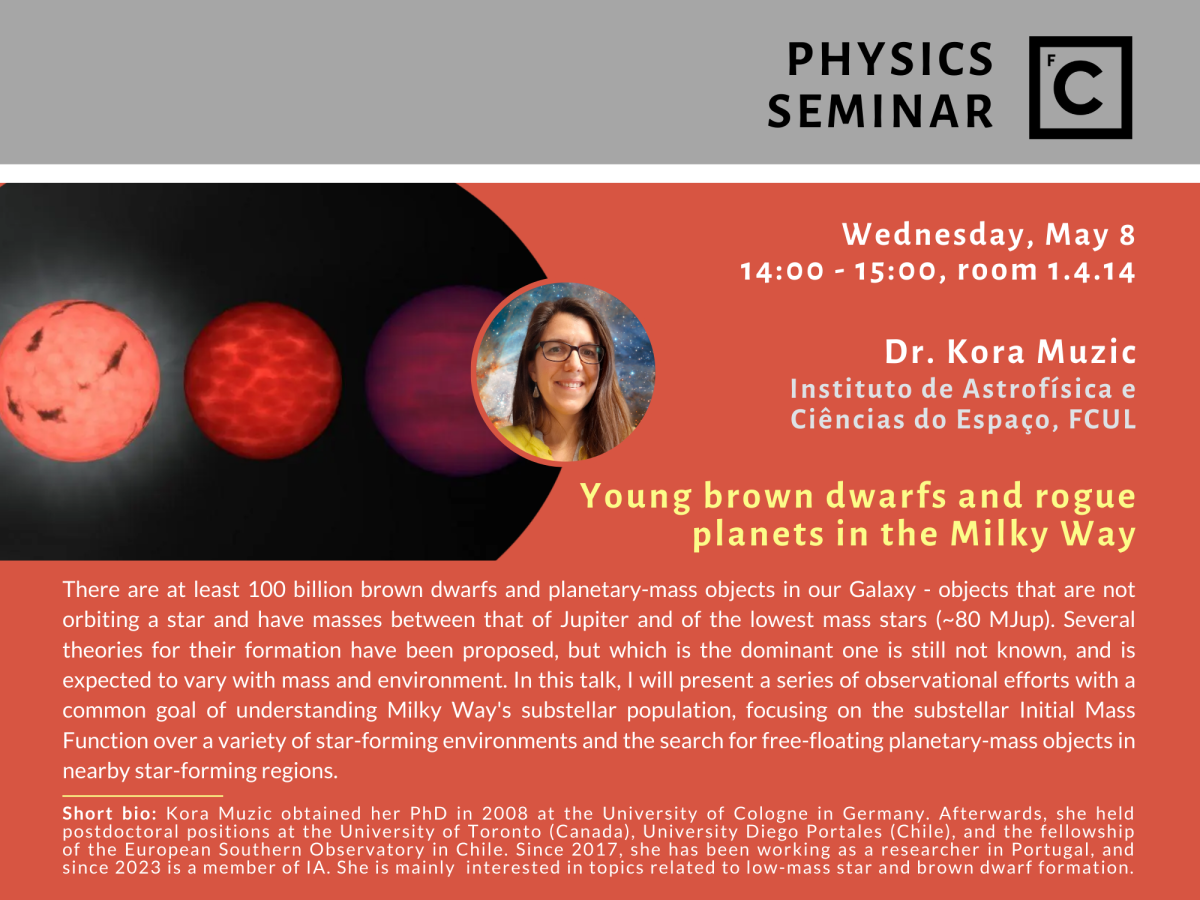Por Kora Muzic (Instituto de Astrofísica e Ciências do Espaço, FCUL).
There are at least 100 billion brown dwarfs and planetary-mass objects in our Galaxy - objects that are not orbiting a star and have masses between that of Jupiter and of the lowest mass stars (~80 MJup). Several theories for their formation have been proposed, but which is the dominant one is still unknown and is expected to vary with mass and environment. In this talk, I will present a series of observational efforts with a common goal of understanding the Milky Way's substellar population, focusing on the substellar Initial Mass Function over a variety of star-forming environments and the search for free-floating planetary-mass objects in nearby star-forming regions.
Short Bio: Kora Muzic obtained her PhD in 2008 at the University of Cologne in Germany. Afterward, she held postdoctoral positions at the University of Toronto (Canada), the University Diego Portales (Chile), and a fellowship of the European Southern Observatory in Chile. Since 2017, she has been working as a researcher in Portugal, and since 2023 is a member of IA. She is mainly interested in topics related to low-mass stars and brown dwarf formation.



















